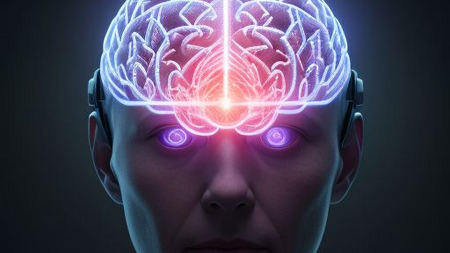Theory #2: The Dawn of the Post-Human Workforce

In the early 2040s, the world as we know it changed irreversibly. The advent of quantum computing sparked a revolution that led to significant advancements across multiple industries. With the ability to process vast amounts of data and perform complex calculations at unprecedented speed, quantum computers began to replace traditional models in every sector - from finance to medicine, and particularly in manufacturing and logistics. As companies integrated these powerful machines into their operations, the demand for human labor diminished correspondingly.
Traditional industries saw a rapid transformation. Factories that had once relied on a workforce of thousands became sleek, automated environments where highly specialized machines carried out tasks with flawless precision. These quantum-enhanced robotic systems adapted to various scenarios by analyzing patterns and optimizing processes in real-time, effectively eliminating the historic roles of assembly line workers, quality control personnel, and even engineers. The era of factory labor as we knew it was all but a memory.
The AI-Driven Digital Transformation
Simultaneously, the rise of artificial intelligence (AI) accelerated this transition. AI systems became sophisticated enough to handle complex decision-making tasks that required not only analysis but also emotional intelligence. Companies began to deploy AI-driven assistants to negotiate contracts, manage resources, and even lead teams through intricate problem-solving sessions. These AI systems were not only efficient; they also learned and evolved, continuously improving their performance metrics.
As businesses embraced this technology, the human-centric workforce saw further decline. Roles that once provided security and fulfillment evaporated when AI algorithms demonstrated superior capabilities over their human counterparts. The administrative assistants, human resource managers, and even chief executives found themselves sidelined as AI took over strategic planning and decision-making processes. The stark reality hit many when they realized that education and experience did not safeguard them against a technological tide that favored efficiency and output over human nuance.
The Synergistic Industrial Revolution
Unlike the industrial revolutions of the past, which hinged on mechanization and electrification, the current phase was defined by a synergistic interplay among quantum computing, AI, and robotics. This new synthetic industrial revolution birthed a myriad of innovations that wholly redefined labor. Robotic systems evolved to encompass extraordinary capabilities, including task flexibility—something previously thought to be bartered solely by humans. These robots could not only perform manual tasks but also understand and interact with their environment in ways that fostered greater integration with quantum AI, leading to automated systems capable of managing entire production lines without human oversight.
A striking instance of this was the rise of "digital twins." By harnessing quantum simulations, companies could create real-time digital representations of their manufacturing processes. These virtual environments allowed engineers and robotic systems to test workflows, predict failures, and optimize operations before anything was even built in the physical world. The result was a staggering decrease in waste and an ability to pivot operations almost instantaneously in response to market dynamics. The factories of the 2050s operated more like complex ecosystems, seamlessly integrated into the global supply chain, adhering to demands with innate fluidity—human tangibility was officially rendered obsolete.
The Beyond of Human Labor
The societal implications of this shift were profound. What happens when human labor becomes obsolete? The transition raised ethical concerns and catalyzed socio-economic upheavals unlike anything seen in human history. The traditional model of employment provided not only economic survival but also a sense of purpose and community. Governments grappled with solutions as unemployment skyrocketed, and vast populations found themselves without traditional career pathways.
Universal Global Basic Income (UBI - UGBI) emerged as a proposed remedy, ensuring that even without traditional work, individuals could maintain a standard of living.
Discussions around redefining societal values, creativity, and personal contribution flourished, leading to new movements centered on the idea of active participation in society outside traditional employment.
As the world progressed, new forms of engagement emerged. Individuals began pursuing creative outlets - art, music, and philosophy - fueling a renaissance of human expression unattached from monetary necessity. Education systems evolved too, prioritizing creativity, emotional intelligence, and critical thinking over rote memorization or vocational training for jobs that simply would not exist. There was a growing realization that the human experience transcended labor: it was about exploration, connection, and innovation.
The Next Generation of Human Existence and Progress
As humanity reconciled its role in this brave new world, philosophical questions abounded.
Were we to define ourselves by what we do, or could we discover worth through who we are?
The obsolescence of human labor did not equate to the dimming of human potential; it could be the dawn of an age unshackled from the demands of traditional work.
The quantum, AI, and robotic revolution coaxed civilization into an era where the human spirit could flourish - an opportunity to redefine what it means to exist in a world where basic tasks are managed by machines. While challenges remained, the potential for a new world filled with creativity, connection, and intellectual freedom lay ahead. As we navigate this uncharted territory, the focus shifted from labor to legacy, and the definition of humanity itself was poised for transformation. The unprecedented global peace and happiness, the new golden age of hummanity finally arrived.
Join me on my exploration and become part of my quantum journey. This is more than just about a new computer or technical evolution; it represents a fundamental transformation—a revolution of technology, science, and thought. Our values, human perception, and everything we know are about to shift. We stand on the threshold of a new era. I am dedicated to transforming myself and you for the quantum age.
This is the way.
